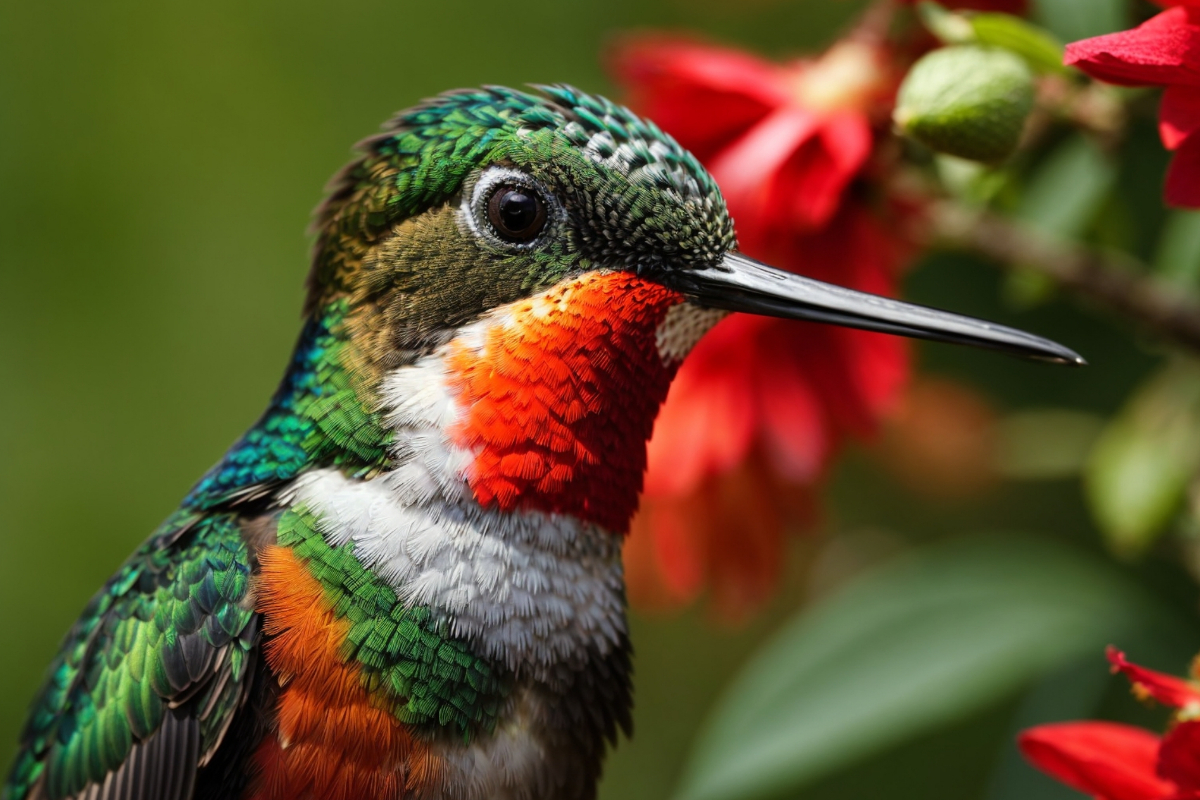Hummingbirds can be found in various states in Central and South America throughout the year. While they are commonly found in Western states like California and Oregon, they also migrate to many states across North and South America.
During warm weather, hummingbirds visit South Carolina to feed, breed, and nest. However, when the weather becomes too cold, they instinctively leave the state.
Although South Carolina does not have a resident hummingbird species, some species of hummingbirds migrate seasonally to the state. Let’s explore when hummingbirds bid goodbye to South Carolina.
4 Key Takeaways About Hummingbirds In South Carolina
- Migration Timing: Hummingbirds depart South Carolina from late August to October, influenced by changing weather. Males leave first, followed by females and then juveniles.
- Common Species: The most commonly seen species in South Carolina is the Ruby-throated hummingbird, which breeds and nests in the state. Rufous hummingbirds also visit seasonally, while 8 other species are rare visitors.
- Best Spots: Hummingbirds are commonly found along the Atlantic Coast, particularly in Charleston and Myrtle Beach, as well as in parks like Hunting Island State Park.
- Attracting Tips: Planting nectar-rich flowers and hanging sugar-water feeders from mid-March to mid-October can attract hummingbirds. Feeders can be left out longer for resident or injured hummingbirds.
If you want to attract hummingbirds to your yard in South Carolina, consider planting a variety of nectar-rich flowers and providing sugar-water feeders. These birds are also attracted to tubular-shaped flowers and rely on insects for additional nutrients.
Hummingbirds begin leaving South Carolina as summer transitions to winter. The male hummingbirds leave first, typically by late August, followed by the females in early September. Baby hummingbirds, having mastered migration skills, are the last to leave.
While the migration pattern is influenced by changing weather conditions and natural instincts, some hummingbirds may still be present in South Carolina until October due to unpredictable weather. They all migrate from the state when the weather becomes unbearable.
In South Carolina, the most frequently found hummingbird species is the Ruby-throated hummingbird. Other species, such as Rufous, Allen’s, Anna’s, Black-chinned, Blue-throated mountain gem, Broad-billed, Broad-tailed, Buff-bellied, and Calliope hummingbirds, are rare visitors.
To spot hummingbirds in South Carolina, visit the Atlantic Coast, especially Charleston and Myrtle Beach. Popular parks like Hunting Island State Park and Caesars Head State Park are also good spots. Central areas near Lake Murray in Columbia have an abundance of nectar-rich flowers, attracting hummingbirds.
Hummingbirds arrive in South Carolina from mid/late March to early April, although arrival times can vary depending on species, migratory patterns, and weather conditions. Some hummingbirds may arrive as early as February or as late as May.
South Carolina does not have a permanent hummingbird species. Native species come to the state for breeding and nesting, while others are passing through or accidental visitors. Most Ruby-throated species leave South Carolina when the weather turns colder, but some may stay if the winter temperatures are milder.
To attract hummingbirds in South Carolina, plant a variety of nectar-rich flowers such as columbines, trumpet vines, salvia, bee balm, lupines, red buckeyes, beard tongues, rhododendron, and petunias. These flowers provide their primary food source.
Nectar feeders can also attract hummingbirds. Fill the feeders with a sugar-water solution and hang them outside your window. Remember to change the solution every few days to prevent fermentation and bacterial growth.
Put out your hummingbird feeders in mid-March to attract early migratory visitors. Most migrating hummingbirds leave South Carolina by October, so you can take down your feeders by mid-October or 2 weeks after the last sighting.
When hummingbirds leave South Carolina, they don’t all travel to the same place. Some birds travel south to Florida or the Bahamas, while others travel west towards Texas or Louisiana. Some even travel further to countries like Cuba, Haiti, and regions in Central America.
While hummingbirds may leave South Carolina during the winter, they are creatures of habit and will likely return to places they have previously fed from. By providing a welcoming environment with nectar-rich flowers and feeders, you can ensure their return next summer.
